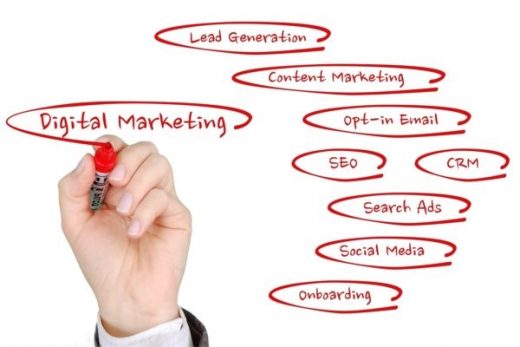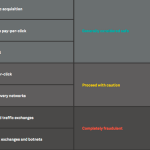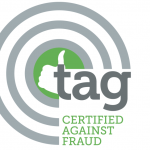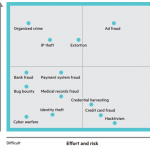End Click Fraud Now Using These Proven Strategies
— October 31, 2017
As interest in paid advertising continues to rise, so does the hesitation to get involved in a marketing technique that can lead to click fraud. And while PPC advertising is a great way to drive traffic to your website and encourage customers to make purchases, this type of online marketing is also very appealing to scammers.
Click fraud is clearly defined as the “black hat technique of falsely inflating the number of clicks on a pay-per-click ad.” In fact, B2C goes on to state that click fraud happens for two distinct reasons:
- Advertisers clicking on competitor ads, driving up costs and forcing them to exceed budget caps
- Ad publishers clicking on their own pay-per-click ads in an attempt to generate more revenue for themselves
As you can see, no matter which method is employed, click fraud is a very real thing that needs dealing with.
In fact, despite Google’s efforts, search engines do not put forth enough effort to eliminate click fraud. This is concerning to advertisers looking to invest their money into paid advertising.
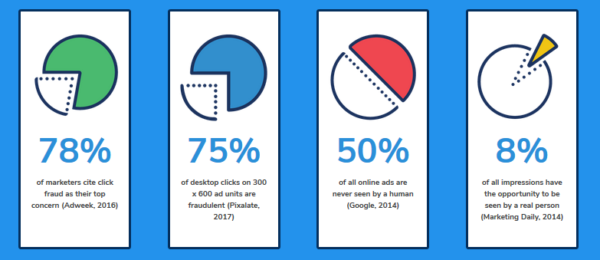
Image Source – PPC Protect Ad Fraud Statistics
That said, there are many things that you can do to prevent your ads from falling victim to click fraud.
That’s why today we are going to look at the different types of click fraud and ways you can prevent it from happening to you.
The Different Types of Click Fraud
When it comes to clicking fraud, there are two distinct categories – manual and automated.
Manual Click Fraud
Actual human beings clicking on ads perform this type of click fraud. Here is a rundown of who might engage in this type of PPC fraud:
- When your competitor clicks on your link (knowing they will not be making a purchase), you have to pay for the click anyways. This drains your budget while generating zero profit.
- When your ad is placed on an affiliate website, and an interested customer clicks on it, the affiliate is paid – not you.
- Non-Malicious Clicks. Those clicking on ads to access your website, with zero intention of making a purchase, harm your bottom line.
Automated Click Fraud
Automated click fraud is a streamlined process designed to do the most damage in the least amount of time. Here is how automated click fraud plays out:
- Internet bots programmed to mimic human behavior place malware on people’s devices and utilize those devices to click on thousands of ads at a time.
- Inflated Traffic Numbers. As a way to boost site traffic to fund future content, affiliates encourage site visitors to click on ads.
- Clicks Farms. This mix of humans using automated systems to click on ads all day long is more damaging because the process is pre-planned.
In the end, click fraud is expected to cost businesses $ 16.4 billion dollars in 2017, and there is no sign of this disturbing trend slowing down. In fact, click fraud is currently growing at a rate of 50% per year, with smartphone click fraud jumping a whopping 102% in 2017 alone.
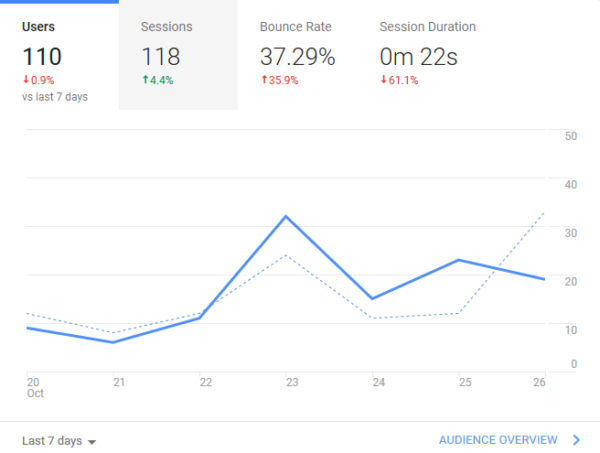
Image source: World Advertising Federation 2017 report
And the worst part is, Kevin Gallagher, a research analyst for BI Intelligence, has compiled a report identifying the major players affected by click fraud. Those utilizing mobile, video, and TV ads are the most appealing click fraud targets.
So, if this is such a prevalent problem, what can you do to prevent it from happening to you, short of never getting involved in PPC advertising?
Ways of Combatting Click Fraud
As mentioned earlier, Google tries to prevent click fraud. Using their three-pronged approach, their automated detection system keeps ad platforms clean, Google employees manually review suspected cases of click fraud, and their team performs advanced research to help devise solutions to stop it.
However, you can be doing more to protect yourself.
1. Use an Automated Click Fraud Solution
Yuval Haimov, the founder of Clickcease, adamantly states advertisers cannot rely on Google to put a stop to click fraud. His reasoning is, by the time Google recognizes click fraud has occurred, your ad budget is used up and your ads have been wasted on people not looking to purchase anything.
Sure, Google does take part in crediting AdWords accounts, but this is often long after the fraud has taken place. Meanwhile, your competitors have possibly swooped in and taken some of your customer base.
Choosing to use an automated click fraud solution is a more efficient way of stopping PPC fraud in its tracks.
Here is what you should look for when deciding which click fraud solution to use:
- 24-hour, real-time monitoring
- Access to detailed reports
- Individualized analysis of user behavior
- Instant recognition of suspected click fraud
- Procedures for recovering AdWords credits
- Notifications of click fraud activity
- Automatic/manual blocking of IP addresses
- Support for desktop and mobile devices
In addition, it is a good idea to familiarize yourself with diversionary tactics that some unsavory click fraud solutions use in order to convince their customers they are preventing click fraud:
- Claims that high pageview metrics denote actual website traffic
- Overwhelming data in the form of reports that show no real fraud prevention
- Lack of transparency, but all the talk that the work is being done
- Use of manual detection only, which does not scale well for large businesses with high volumes of traffic
In all, it is best to research the click fraud solution you are going to use to make sure they offer the services suitable for your business’ needs.
2. Protect Yourself but Keep an Open Mind
If you use the PPC ad strategy for promoting your website, it’s crucial you don’t rely on others, such as Google, to keep you safe from click fraud.
Monitor your website using a solution such as Google Analytics.
For instance, you should monitor your website for unusual spikes in traffic and click peaks, paired with a decrease in page views. This will signify that someone is clicking on your ads, without actually visiting your website. In addition, if you notice a significant jump in click-throughs, but no increase in sales conversions, you should consider reporting suspected click fraud to the search engine your ads appear on.
It is important to remember, however, that over monitoring your website can lead to a loss in legitimate traffic.
Take into consideration the following:
- Only block suspicious IP addresses for a limited amount of time
- Regularly evaluate your overall marketing strategy to uncover additional reasons for low sales conversions
- Realize that not all non-converting clicks are fraudulent
- Always use a good hosting provider so your server does not get used against you by internet bots
Altogether, it is about balance when it comes to monitoring your website and preventing click fraud.
3. Don’t Confuse Bad Marketing with Click Fraud
It can be tempting to place the blame for your company’s lack of sales conversions on click fraud. However, there is always the chance your marketing strategies need improvement.
If you are experiencing a low performing website, repeat IP address clicks, abnormally high click-through rates with increased bounce rates and low conversions, you might have a click fraud issue.
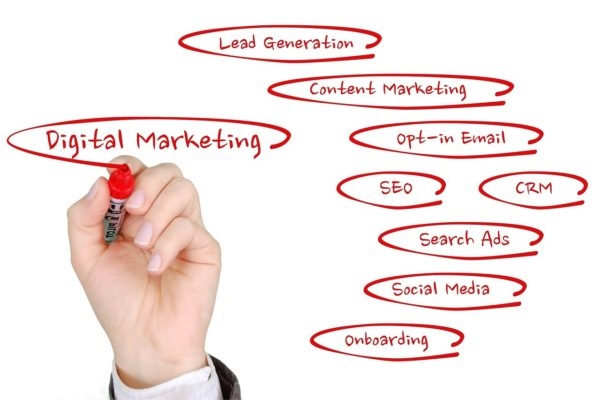
Image Source – Pixabay
However, there is more to becoming a successful business than converting PPC ads. In fact, killer content, keyword relevance, and learning how to drive the right type of traffic to your website through multiple channels such as social media will have a direct impact on your overall sales.
Final Thoughts
In the end, click fraud is a very serious thing that all businesses should learn about. In fact, as companies continue to take their business online at alarming rates, click fraud is bound to get worse before it gets any better.
You do not have to become a victim of PPC fraud, and you can still generate a sizable profit by investing in paid advertisements. However, the key to overcoming this major issue is to become knowledgeable about the issue, equip yourself with the right tools to beat it, and regularly evaluate your entire business model for improvements.
Digital & Social Articles on Business 2 Community
(23)

